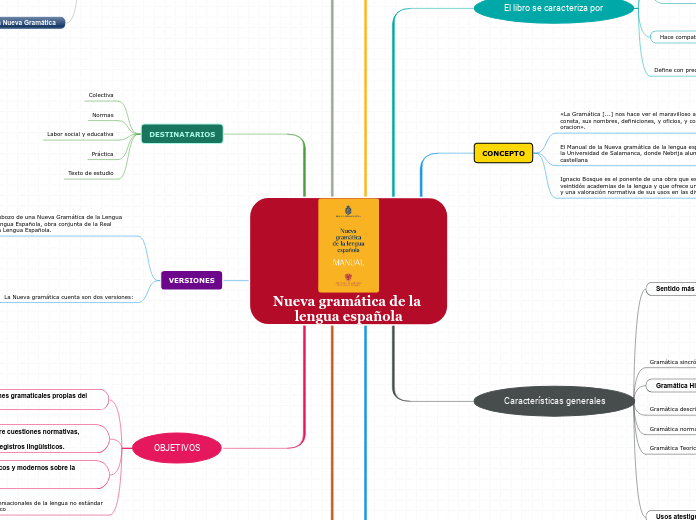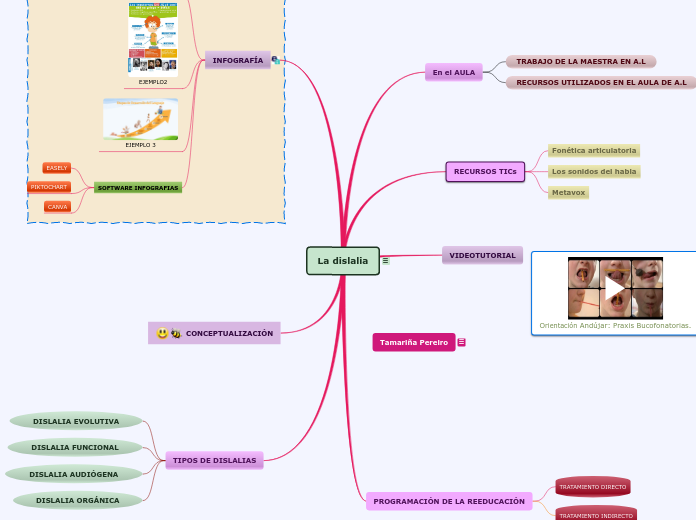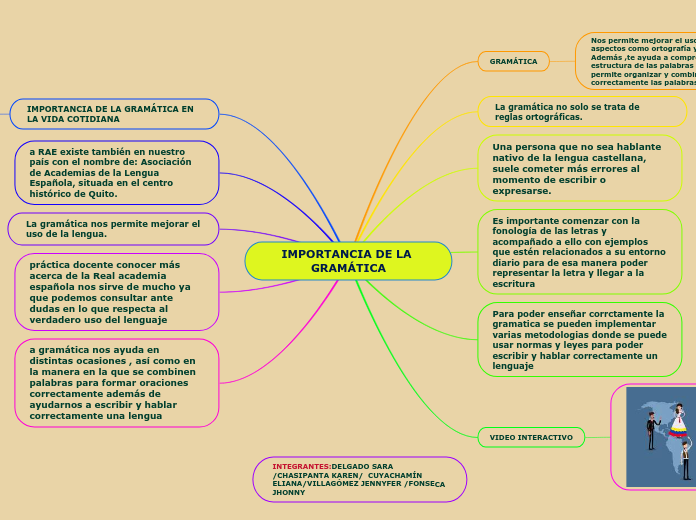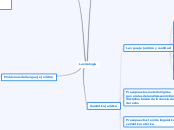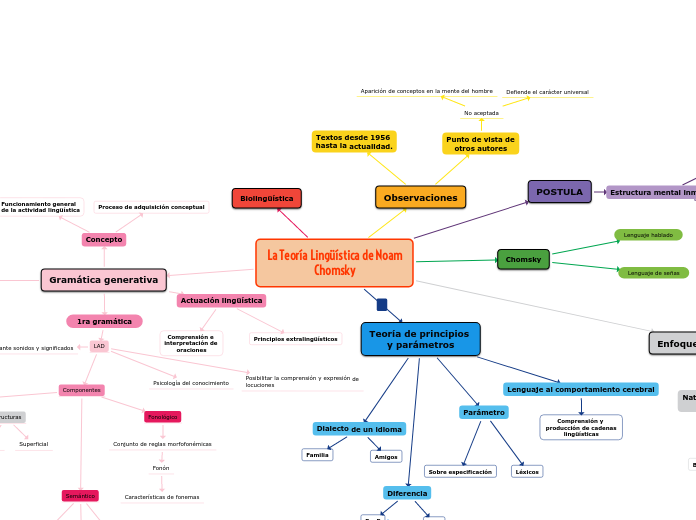GRUPO 3
Nueva gramática de la lengua española
The Solar System is the gravitationally bound system of the Sun and the objects that orbit it, either directly or indirectly. Of the objects that orbit the Sun directly, the largest are the eight planets, with the remainder being smaller objects, the dwarf planets, and small Solar System bodies.
APLICACIONES
Jupiter is a giant gas world that is the most massive planet in our solar system.
Its swirling clouds are colorful due to different types of trace gases.
And a major feature in its swirling clouds is the Great Red Spot, a giant storm more than 10,000 miles wide. It has raged at more than 400 mph for the last 150 years, at least.
Jupiter has a strong magnetic field, and with 75 moons, it looks a bit like a miniature solar system.
identficacion en las oraciones de los
tipo de proposición subordinada,
se aplicara en la definicionde palabras del lexico español
referencia para el conocimiento y la enseñanza de la lengua española
How long does it take for Jupiter to go around the sun?
recomendaciones de carcter normativo A las guías morfológicas que se apuntan.
A planet's day is the time it takes the planet to rotate or spin once on its axis.
Write down Jupiter's day measured in Earth days.
OBJETIVOS
Saturn is known most for its rings.
Galileo Galilei first thought it was an object with three parts: a planet and two large moons on either side.
Not knowing he was seeing a planet with rings, the stumped astronomer entered a small drawing — a symbol with one large circle and two smaller ones — in his notebook.
The rings are made of ice and rock and scientists are not yet sure how they formed. The gaseous planet is mostly hydrogen and helium.
Registrar aquellas variantes conversacionales de la lengua no estándar atestiguadas en el mundo hispánico
Presentar una síntesis de los estudios clásicos y modernos sobre la gramática de
nuestra lengua
Saturn has over 150 moons and satellites. However, of these vast numbers of moons, only 62 are known and confirmed as moons.
Name at least 5 of these moons.
Proporcionar respuesta a posibles dudas sobre cuestiones normativas, haciendo
compatibles las referencias necesarias a los registros lingüísticos.
How long does it take for Saturn to go around the sun?
Describir las construcciones gramaticales propias del español general.
Reflejar adecuadamente las variantes fónicas, morfológicas y sintácticas
que una determinada comunidad puede considerar propias de la lengua culta.
VERSIONES
La Nueva gramática cuenta son dos versiones:
Un Compendio
Centrado en la enseñanza dirigida en los niveles no universitarios
Destinado al público en general
La básica
Usarán dos tamaños de letra para separar las cuestiones fundamentales de las menos esenciales.
Explica con detalles
Tras casi cuarenta años de elaboración desde la publicación en 1973 del Esbozo de una Nueva Gramática de la Lengua Española, ha aparecido en diciembre de 2009 la Nueva Gramática de la Lengua Española, obra conjunta de la Real Academia Española de la Lengua y de la Asociación de las Academias de la Lengua Española.
DESTINATARIOS
Texto de estudio
Práctica
Labor social y educativa
Normas
Colectiva
EJEMPLIFICACIÓN
It was once considered a planet but in August 2006 the International Astronomical Union (IAU) downgraded the status of Pluto to that of “dwarf planet.”
Pluto is unlike other planets in many respects. It is smaller than Earth's moon; its orbit is highly elliptical.
It's a cold, rocky world with a tenuous atmosphere. Pluto is a very active ice world that's covered in glaciers, mountains of ice water, icy dunes, and possibly even cryovolcanoes that erupt icy lava made of water, methane or ammonia.
Corpus de la Nueva Gramática
A planet's day is the time it takes the planet to rotate or spin once on its axis.
Write down Pluto's day measured in Earth days.
Formado por textos escritos y orales procedentes de España, América, Filipinas y Guinea Ecuatorial con una distribución de 25 millones de formas por cada uno de los años correspondientes al siglo XXI.
En el congreso celebrado en Medellín en marzo de 2007, las academias de la lengua española acordaron encomendar a la Real Academia Española la construcción del Corpus del Español del Siglo XXI
Corpus de Referencia del Español Actual (CREA)
How long does it take for Pluto to go around the sun?
Está diseñado para proporcionar información exhaustiva acerca de una lengua en un momento determinado de su historia y, por tanto, ha de ser lo suficientemente extenso para representar todas las variedades relevantes de la lengua en cuestión.
Corpus Diacrónico del Español (CORDE)
The dwarf planet Pluto has five moons.
Name these moons.
Es un corpus textual de todas las épocas y lugares en que se habló español, desde los inicios del idioma hasta el año 1974
La construcción de la Nueva gramática se apoya en una amplia base documental
Los Corpus son diseñados para extraer información con la cual estudiar las palabras y sus significados, así como la gramática y su uso a través del tiempo.
Estructura
Earth is a water world, with two-thirds of the planet covered by oceans.
It's the only world known to harbor life.
Earth's atmosphere is rich in nitrogen and oxygen.
Its name originates from 'Die Erde,' the German word for 'the ground.'
Earth may once have had two moons, nowadays it has just one.
SINTAXIS
Analiza estructura
Orden y combinación de palabras
MORFOLOGIA
How long does it take for Earth to go around the sun?
Estructura interna
palabras
FONÉTICA Y FONOLOGÍA
A planet's day is the time it takes the planet to rotate or spin once on its axis.
Write down the Earth's day in hours.
Variantes de pronunciación
CUESTIONES GENERALES
se describen
Unidades fundamentales
Relación
Partes de la gramática
55 capítulos, articulados en 4 secciones
fundamentales.
Características generales
Mercury is the smallest, only a little bit larger than Earth's moon. Mercury has no moon.
It experiences dramatic changes in its day and night temperatures: Day temperatures can reach a scorching 840 F (450 C), which is hot enough to melt lead. Meanwhile, on the night side, temperatures drop to minus 290 F (minus 180 C).
It also has a very thin atmosphere of oxygen, sodium, hydrogen, helium, and potassium and can't break-up incoming meteors, so its surface is pockmarked with craters, just like the moon.
Usos atestiguados orales
How long does it take for Mercury to go around the sun?
Recursos heurísticos
Construcciones agramaticales
Gramaticalidad y su corrección idiomática
introspección
Gramática Teorica
Fundamenta la teoría gramatical
Gramática normativa
Establece el uso de la lengua culta
Gramática descriptiva
Presenta propiedades gramaticales
La fonética, fonología, sintaxis y morfología
Gramática Histórica
A planet's day is the time it takes the planet to rotate or spin once on its axis.
Write down Mercury's day measured in Earth days.
Estudia la evaluación de la lengua
Gramática sincrónica
Estudia los fenómenos lingüístics
Sentido más estricto
fonológia
Organización lingüística
fonética
Analiza los sonidos del habla
Pragmática
Analiza recursos idiomáticos
Semántica
Significado lingüístico y expresiones sintácticas
Morfología
Constitución interna y variaciones de la palabra
La gramática
Estudia la estructura de las palabras
CONCEPTO
Ignacio Bosque es el ponente de una obra que es el resultado de once años de trabajo de las veintidós academias de la lengua y que ofrece una descripción pormenorizada de la lengua española y una valoración normativa de sus usos en las diversas variedades lingüísticas
El Manual de la Nueva gramática de la lengua española se presentó el 11 de mayo de 2010 en la Universidad de Salamanca, donde Nebrija alumbró la primera Gramática sobre la lengua castellana
«La Gramática [...] nos hace ver el maravilloso artificio de la lengua, enseñándonos de qué partes consta, sus nombres, definiciones, y oficios, y como se juntan y enlazan para formar el texido de la oracion».
El libro se caracteriza por
Uranus is an oddball. It has clouds made of hydrogen sulfide, the same chemical that makes rotten eggs smell so foul.
It rotates from east to west like Venus. Its tilt causes extreme seasons that last 20-plus years, and the sun beats down on one pole or the other for 84 Earth-years at a time.
Methane in the atmosphere gives Uranus its blue-green tint. It also has 13 sets of faint rings.
Define con precisión y con claridad los conceptos
Hace compatibles las recomendaciones de carácter normativo
variantes de registro.
descripción de los usos particulares
Presta especial atención a la descripción de las principales variedades fónicas,
morfológicas y sintácticas de todas las áreas hispanohablantes.
Uranus has 27 moons that we know of. Five of the moons are large and the rest are much smaller.
Name these 5 moons.
condiciones de uso
matices de significado
Es una obra detallada que atiende a las diferencias que se establecen en función de áreas dialectales, niveles de lengua y registros.
How long does it take for Uranus to go around the sun?
INICIO
Venus is Earth's twin in size and has no moons.
Its surface has various mountains and volcanoes. Because of its thick, toxic atmosphere that's made of sulfuric acid clouds, Venus is an extreme example of the greenhouse effect. The average temperature on Venus' surface is 900 F (465 C).
Venus spins slowly from east to west, the opposite direction to most of the other planets.
The Greeks believed Venus was two different objects — one in the morning sky and another in the evening. Because it is often brighter than any other object in the sky, Venus has generated many UFO reports.
Se acordó
En la que los hablantes del mundo hispánico y también los especialistas pudieran encontrar la descripción de las características gramaticales de la lengua española a lo largo y ancho de su territorio, así como respuesta a posibles dudas sobre
cuestiones normativas.
Fuera una gramática descriptiva y normativa
Publicación del esbozo de la nueva gramatica de la lengua española
A planet's day is the time it takes the planet to rotate or spin once on its axis.
Write down Venus's day measured in Earth days.
1973
Aparición de la gramática RAE
Our Solar System has eight “official” planets which orbit the Sun.
Each planet is at a different distance from the sun. Name its position.
1931
